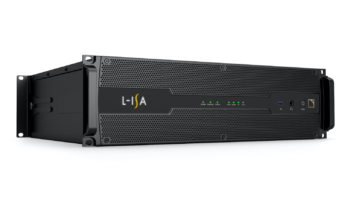In the never-ending quest for dominance in the “my surround format can beat up your surround format” struggle, proponents of DVD-A, SACD and DVD-Video continue to slug it out. And with good reason: The winner — or, more accurately, the survivor — has a lot to gain, both financially and in bragging rights. But in terms of music releases, one hugely successful surround format has been largely ignored: Dolby Stereo, aka Dolby Pro Logic.
Beginning with the theatrical release of Barbra Streisand’s A Star Is Born in 1976, Dolby Stereo became hugely popular with blockbusters such as Star Wars and Close Encounters of the Third Kind a year later. The format matrixed four channels onto a stereo track, and the theater’s Dolby Cinema Processor would decode the information for full LCRS playback. The key advantage here was that the soundtrack could be played mono, stereo or 4-channel from a single print, offering forward and backward-compatibility.
In the early ’80s, stereo home VCRs became popular, and millions of videotapes of popular movies were sold worldwide. But it wasn’t until years later (1987) that the first home Pro Logic decoders began appearing, fueling the home-theater revolution. Today, most network TV programming is broadcast with Pro Logic-encoded surround sound, and some 80 million multichannel receivers with decoders have been sold. The situation evolved in 2000, when Dolby debuted its Pro Logic II system, a playback decoder that creates a 5.1-style, split surround effect from a Pro Logic LCRS feed. At next month’s NAB show, Dolby will unveil a Pro Logic II upgrade for its DP563 hardware encoder, which will allow broadcasters to encode 5.1 mixes to a stereo signal that’s easily transmitted without changing existing gear.
Like the original concept for 35mm Dolby Stereo releases, tracks encoded as Pro Logic II are backward-compatible with mono, stereo, LCRS or 5.1 playback systems. So Pro Logic II is great for game soundtracks, videotape releases and broadcasts (TV and radio), but what does that mean in a world of discrete 5.1 releases, whether Dolby Digital (AC-3), SACD or DTS? Maybe not much. However, it could mean a mini-revolution for our old friend, the humble 44.1kHz, 16-bit CD, onto which producers could pack 5.1 mixes on the same release format that also plays back just fine on a stereo boombox. It may not be the ultimate medium, but it sounds much better than a VHS Hi-Fi; so in providing a convenient alternative to DVD surround formats, Pro Logic (I or II) releases can also offer a bonus to the CD music customer.
While we’re on the subject of bonus materials, in this issue of Mix, we introduce “Online Extras.” Every month, we’re constantly faced with deciding what to do with the extra text or photos that would otherwise be cut when an article is too long. The decisions aren’t easy, but thanks to the Web, we can offer an alternative. The “Online Extras” logo at the end of an article indicates that additional information, graphics, tips, photos and even audio clips are available on our redesigned and expanded www.mixonline.com. Check it out.
We think you’ll like it.
BOOKMARK THIS! Check out the all-new Mix Website at www.mixonline.com.





